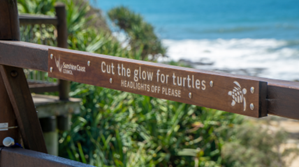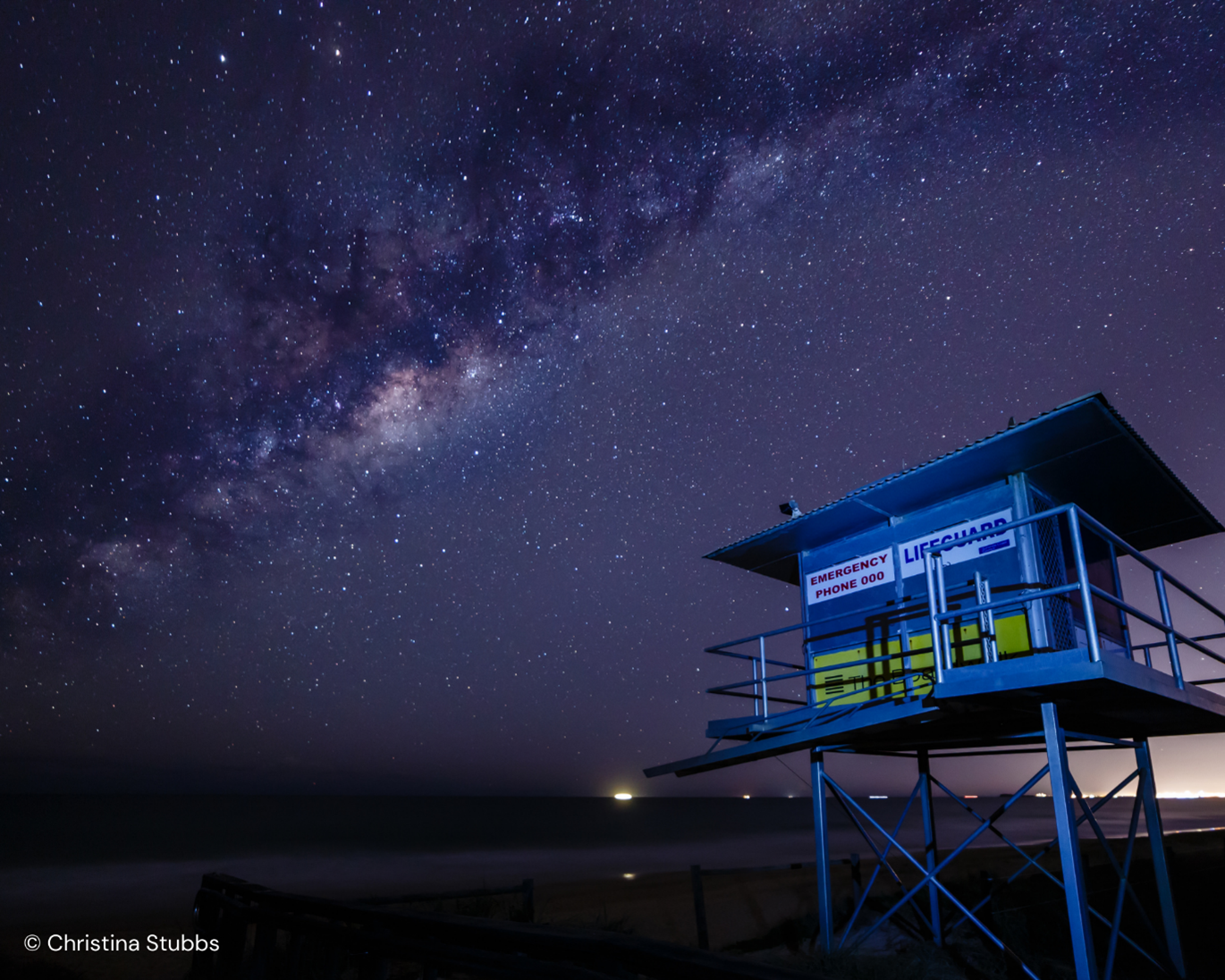Light pollution and marine turtles
Light pollution disorientates turtles. Under natural conditions turtle hatchlings emerge from nests at night and orient toward the sea relying on light cues that attract them toward the brighter horizon over the water.
Disorientation
Light pollution disorientates turtles. Under natural conditions turtle hatchlings emerge from nests at night and orient toward the sea relying on light cues that attract them toward the brighter horizon over the water.
Artificial lighting and sky glow (caused by lighting within 50km of the coastline) is very distracting to hatchlings, causing them to move away from the sea and can lead to death from exhaustion, dehydration, and predation.
Hatchlings that do reach the ocean remain confused by artificial light sources and tend to linger in the near shore zone, potentially increasing their risk of predation and exhaustion.
Nesting disturbance
Female sea turtles are nocturnal nesters, leaving the ocean environment only a few times over their lifetime to incubate eggs on beach dunes. When exiting the water nesting females are timid and easily spooked by movement and light. Research shows that turtles prefer to nest on dark stretches of coast.
Female marine turtles return the beach at night-time to lay their eggs. Artificial lighting along the coast can deter nesting turtles from coming ashore or cause them to abandon nesting attempts. This disruption can significantly reduce the number of successful nests, negatively impacting the population.
How light pollution is measured
The Sunshine Coast marine turtle conservation plan aligns with the national light pollution guidelines for wildlife, which aim to raise awareness of the potential impacts of artificial light on wildlife and provide a framework for assessing and managing these impacts around susceptible listed wildlife.
We measure light pollution on nesting beaches using the methods described in the national guidelines. The results of the 5-yearly survey are available here:
- Sunshine Coast benchmark 2017 ALAN survey (PDF, 11,240MB)
- Sunshine Coast benchmark 2022 ALAN survey (PDF, 9,659MB)
An increasing threat to the survival of turtle hatchlings comes from artificial lighting from coastal development.
Coastal lighting management actions are considered essential for the continued survival of endangered marine turtles.
Best practice lighting design
Natural darkness has conservation value in the same way as clean water, air and soil and should be protected through good-quality lighting design. The following principles are identified in the national light pollution guidelines as best practice.
The following simple management principles can be used to reduce light pollution:
- Start with natural darkness and only add light for specific purposes
- Use adaptive light controls to manage light timing, intensity, and colour
- Light only the object or area intended - keep lights close to the ground, directed, and shielded to avoid light spill
- Use the lowest intensity lighting appropriate for the task
- Use non-reflective, dark-coloured surfaces
- Use lights with reduced or filtered blue, violet, and ultraviolet wavelengths.
The application of best practice lighting design for all outdoor lighting is intended to reduce skyglow and minimise the effects of artificial light on wildlife.
More information and resources:
- Queensland Government - Cut the glow campaign
- Australasian Dark Sky Alliance
- Reducing the effect of light pollution on wildlife (dcceew.gov.au
Toolkit for residents, businesses, and development community
We are developing a toolkit to support residents, businesses, and the development community to live in a wildlife friendly biosphere. As tools are developed, this page will be updated with resources.
Lighting Management Plan Template – Marine Turtles
The lighting management plan template may assist in managing light pollution in accordance with the National Light Pollution Guidelines for Wildlife (https://www.agriculture.gov.au/sites/default/files/documents/national-light-pollution-guidelines-wildlife.pdf)


